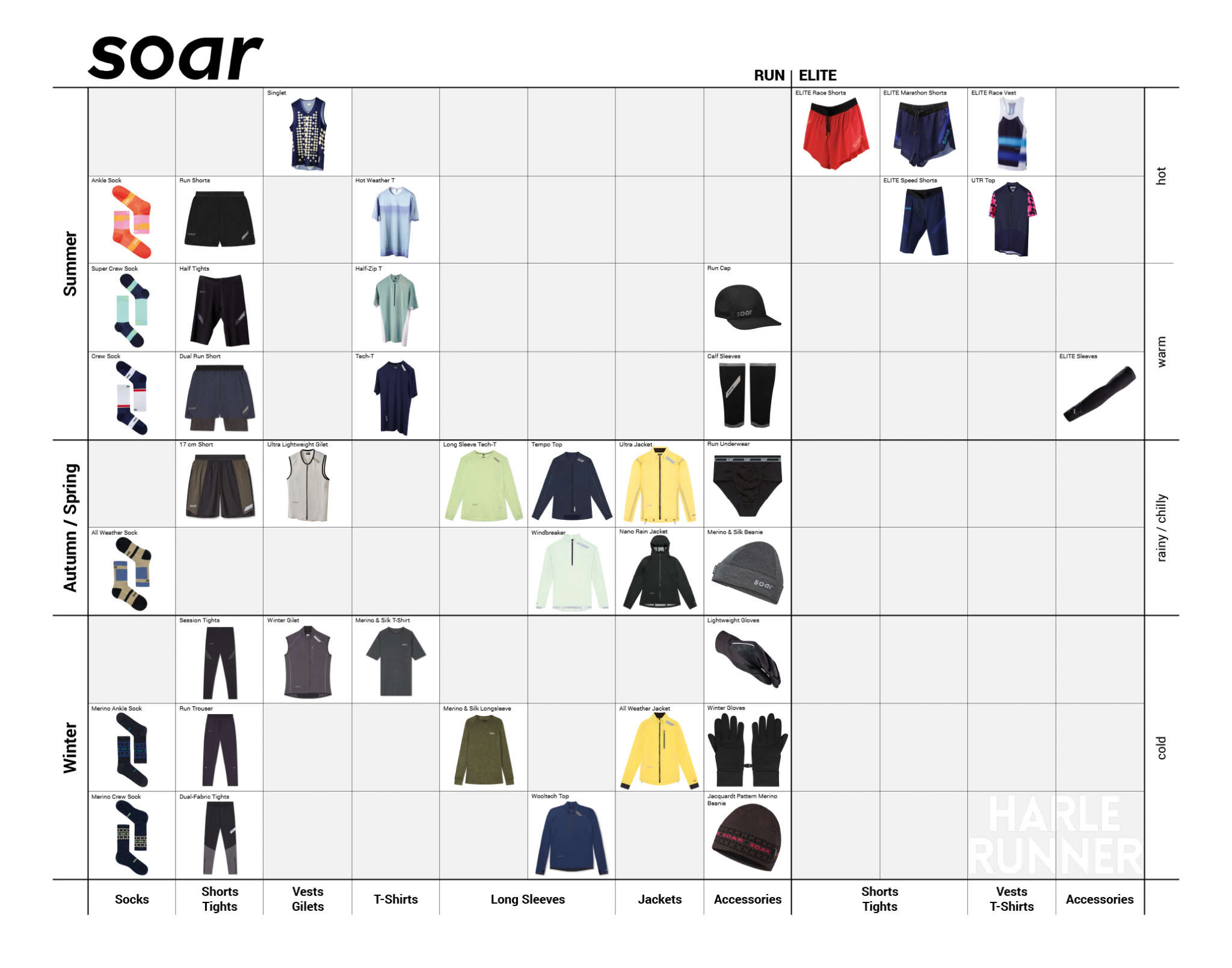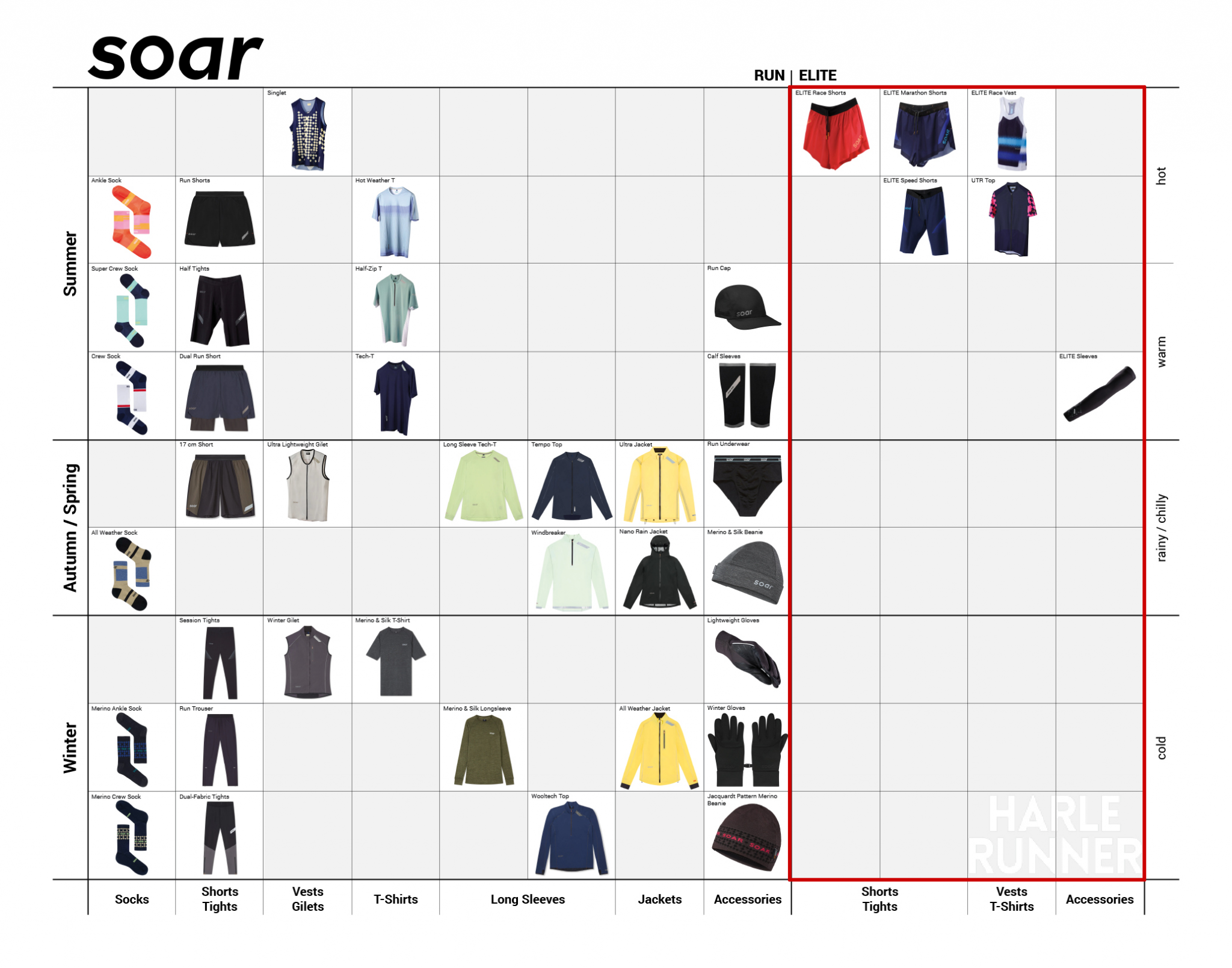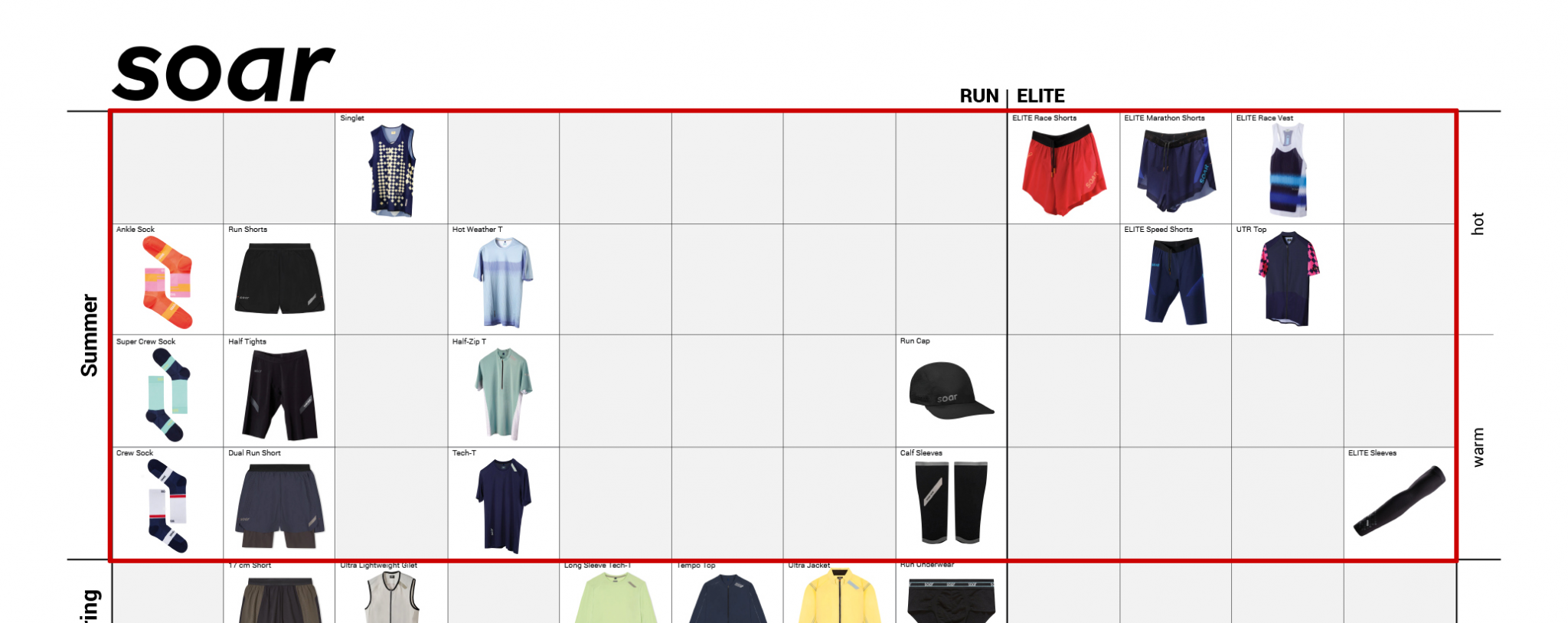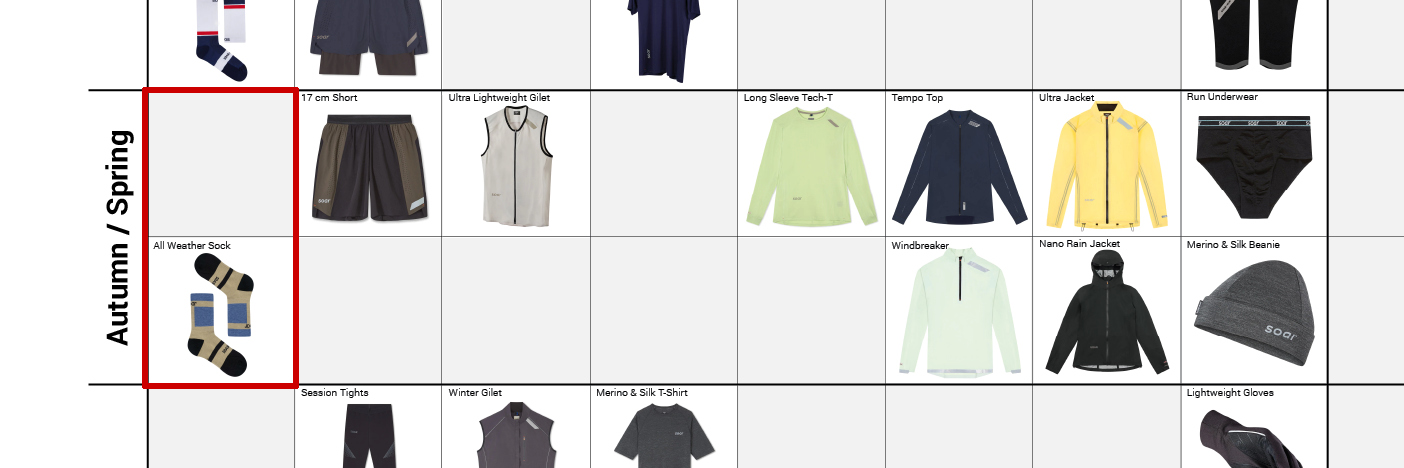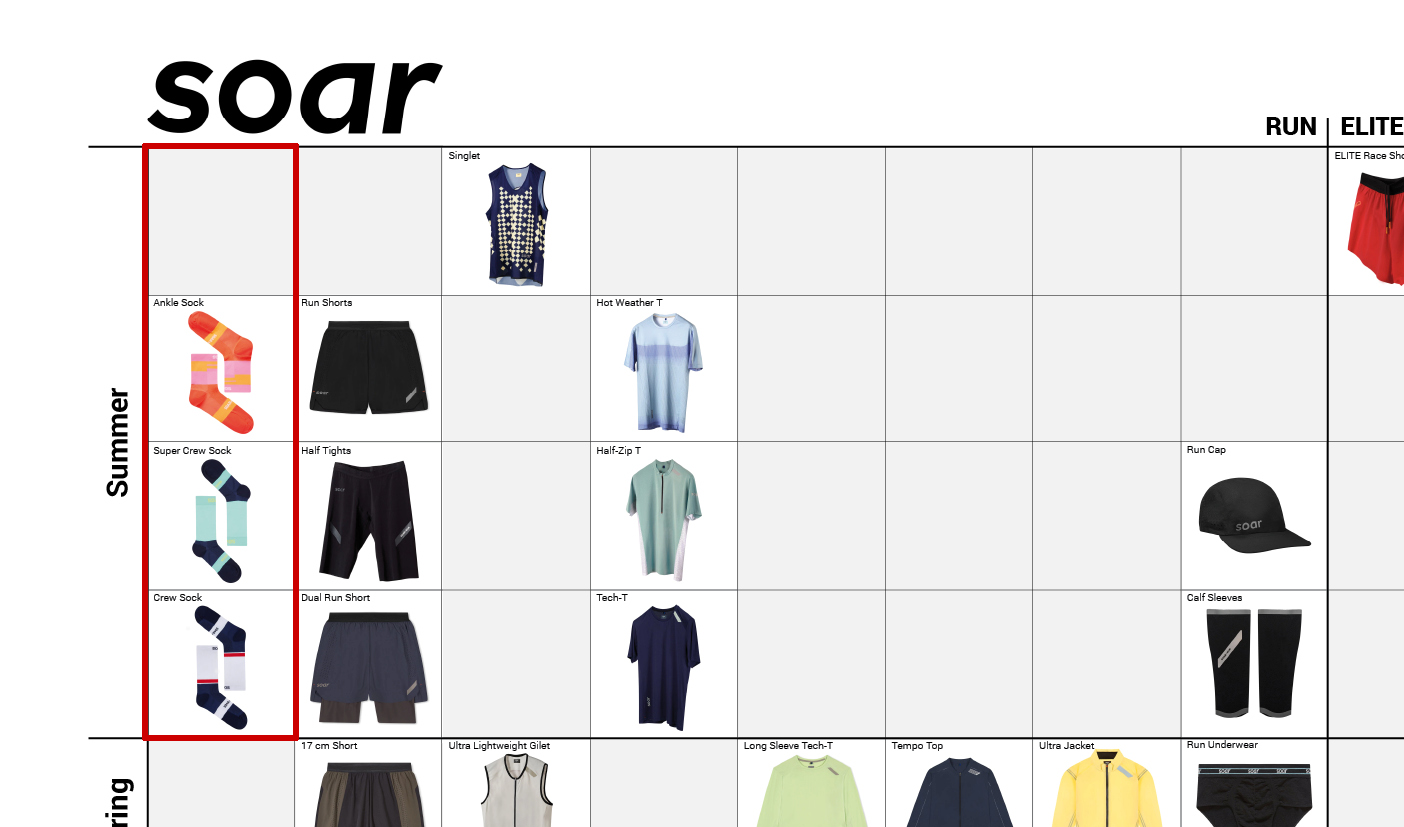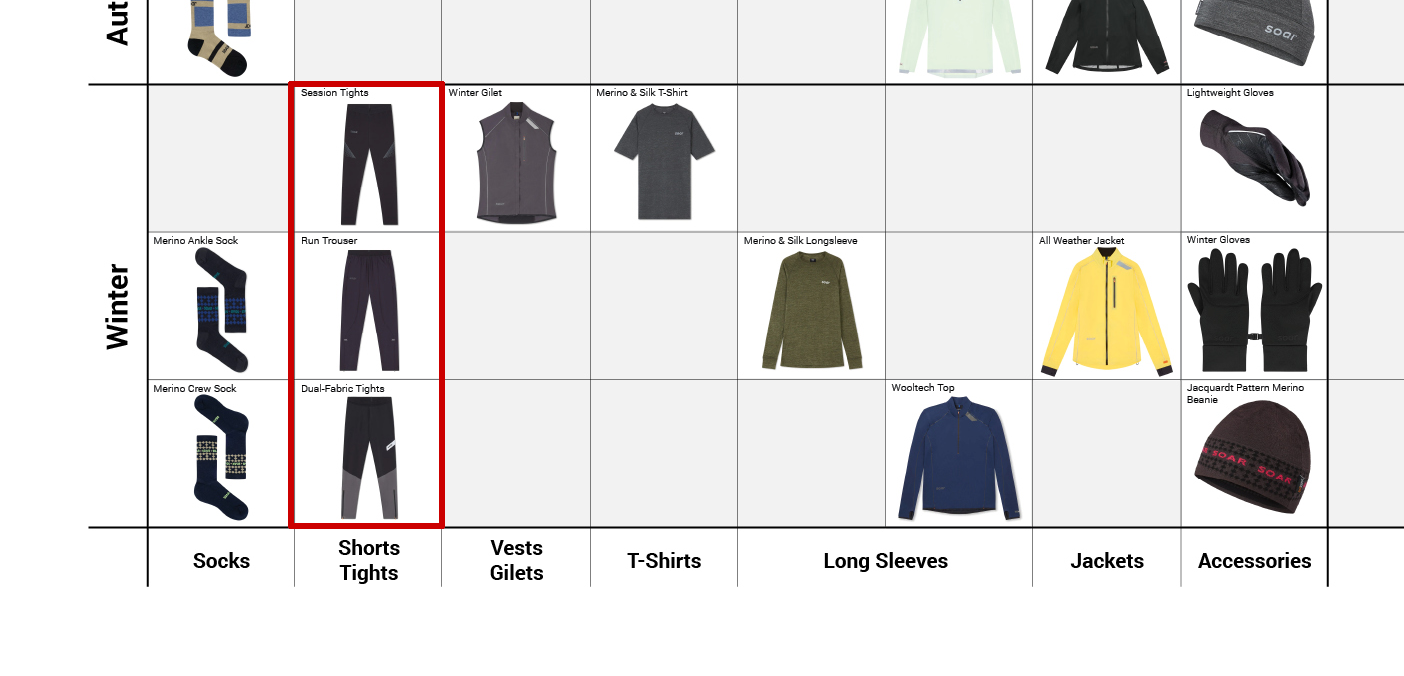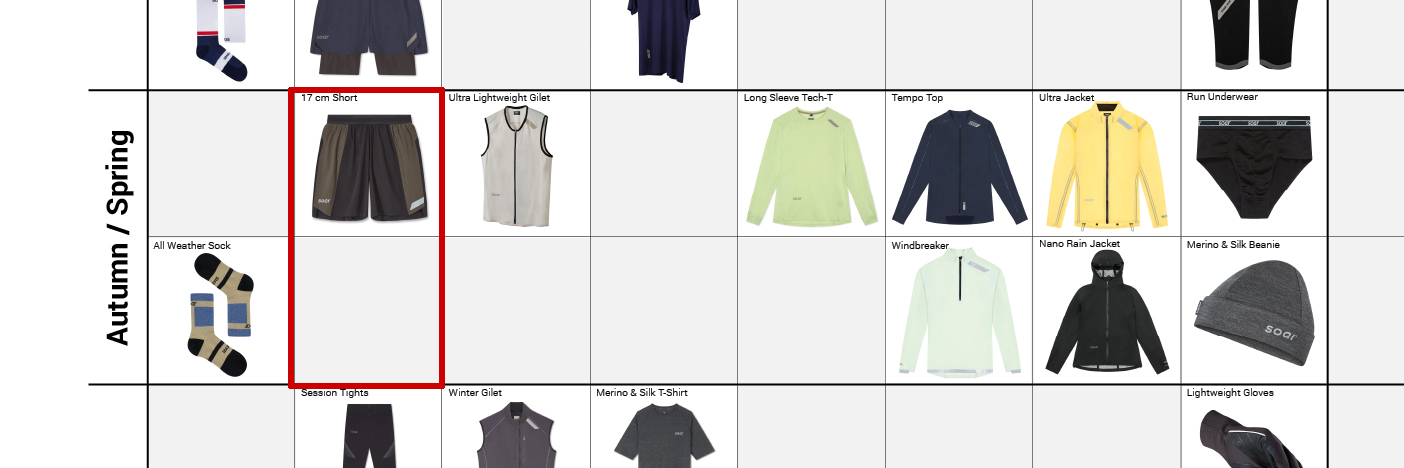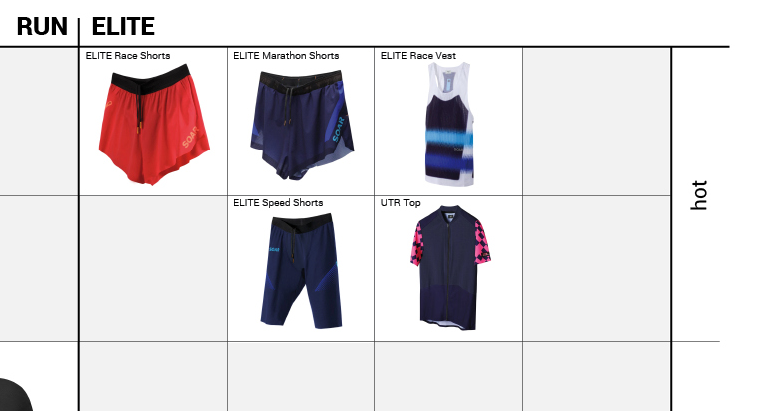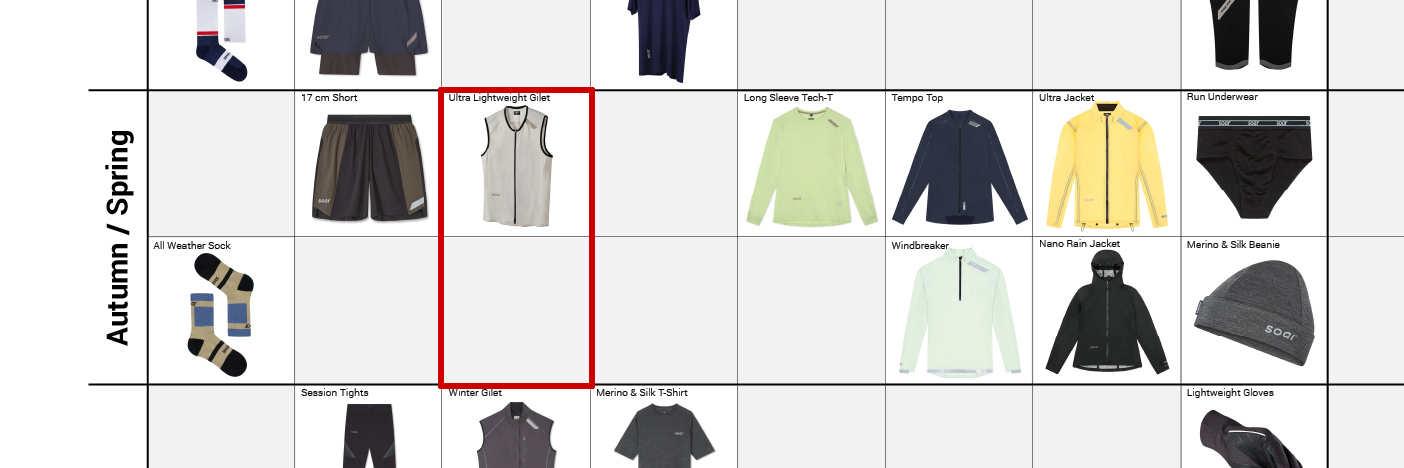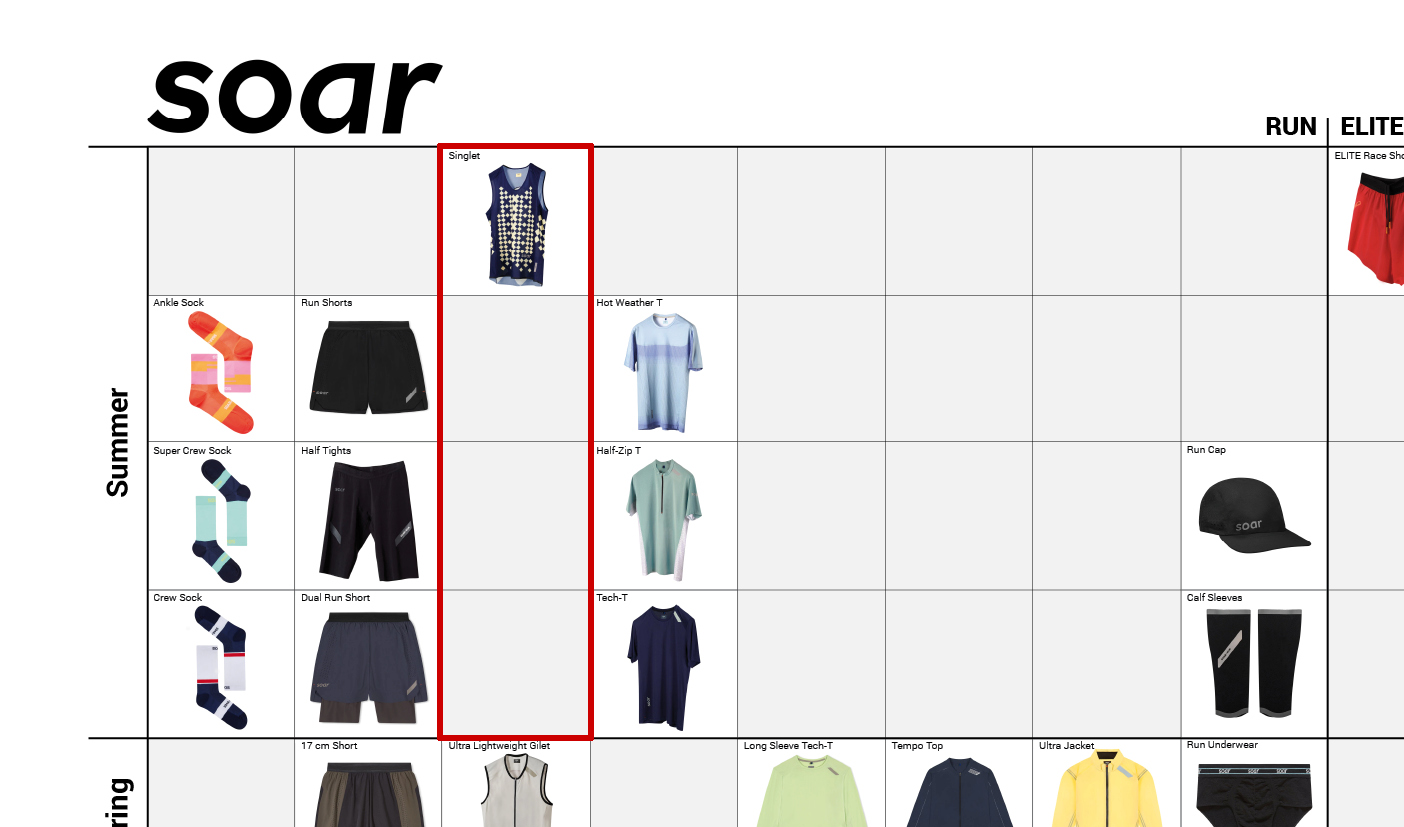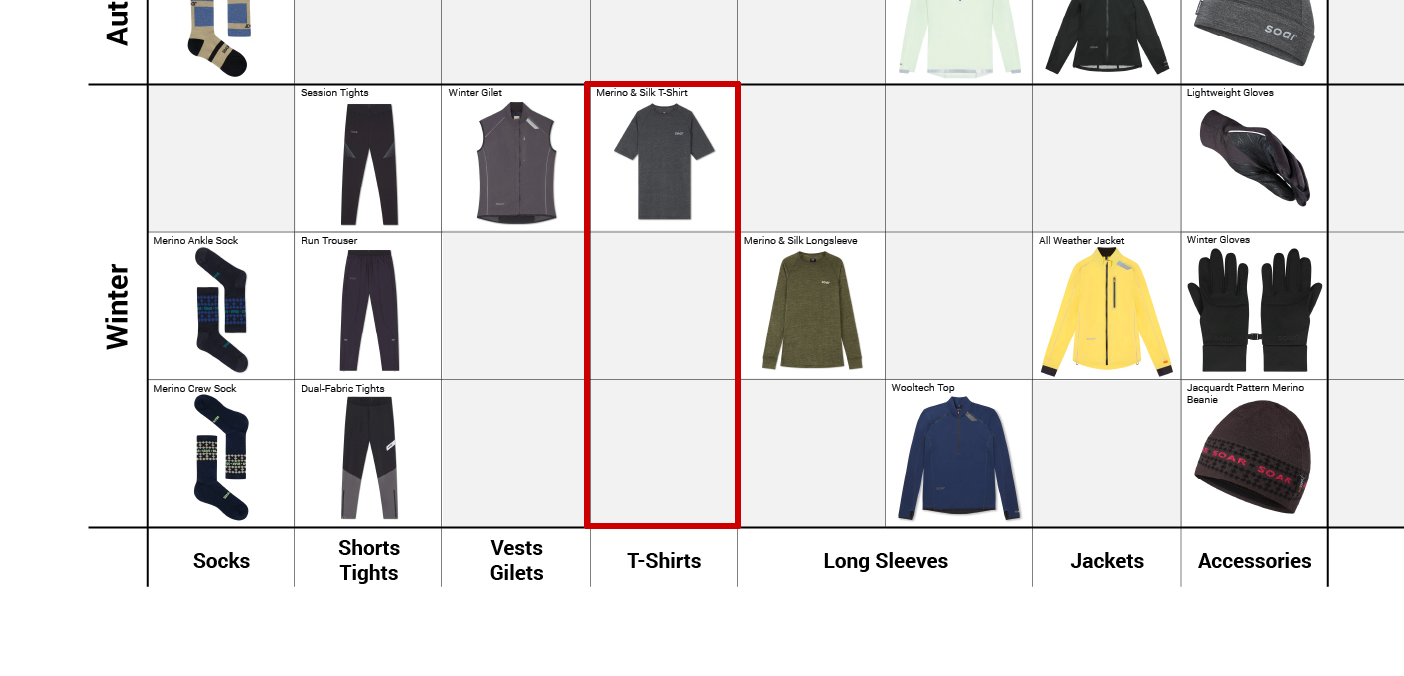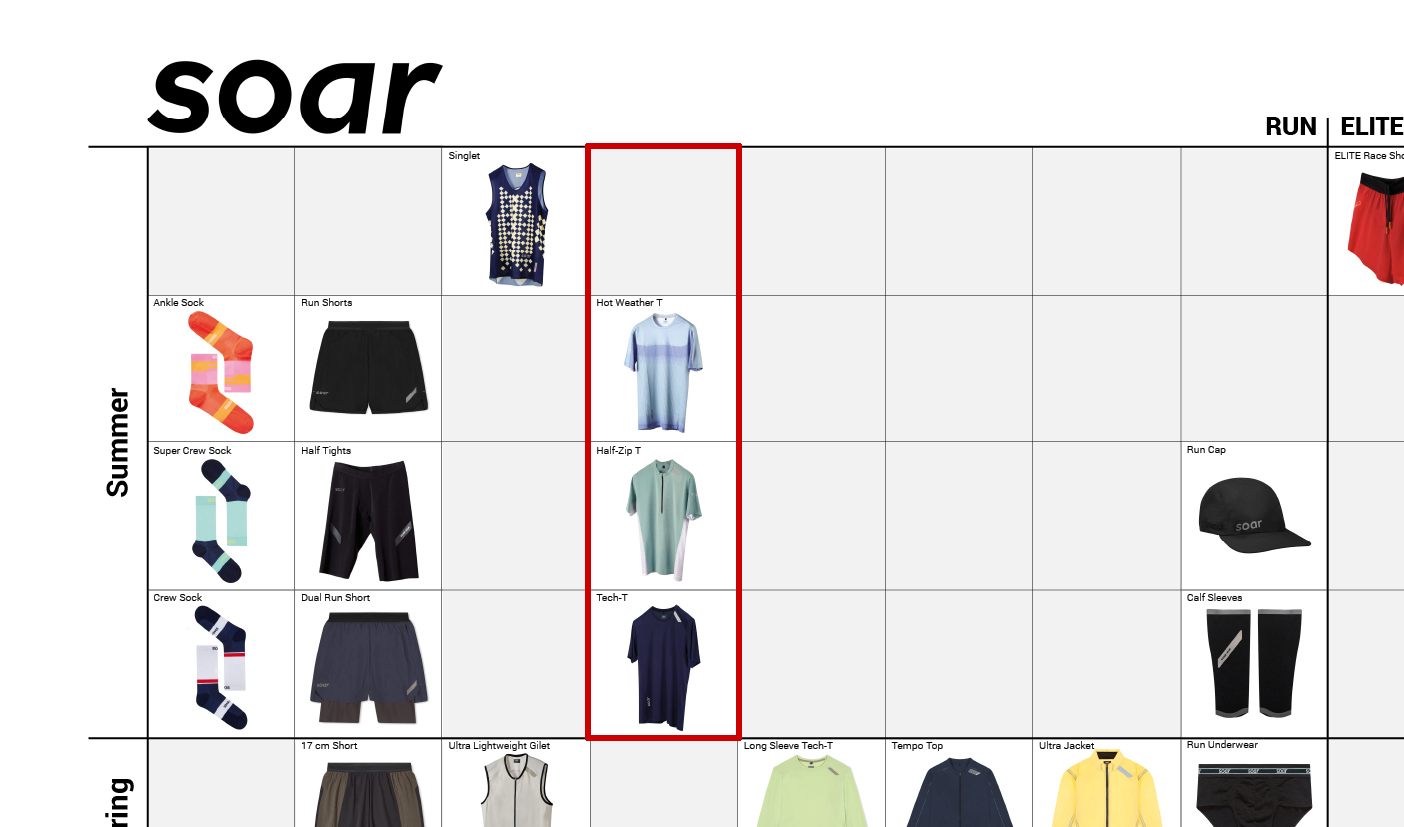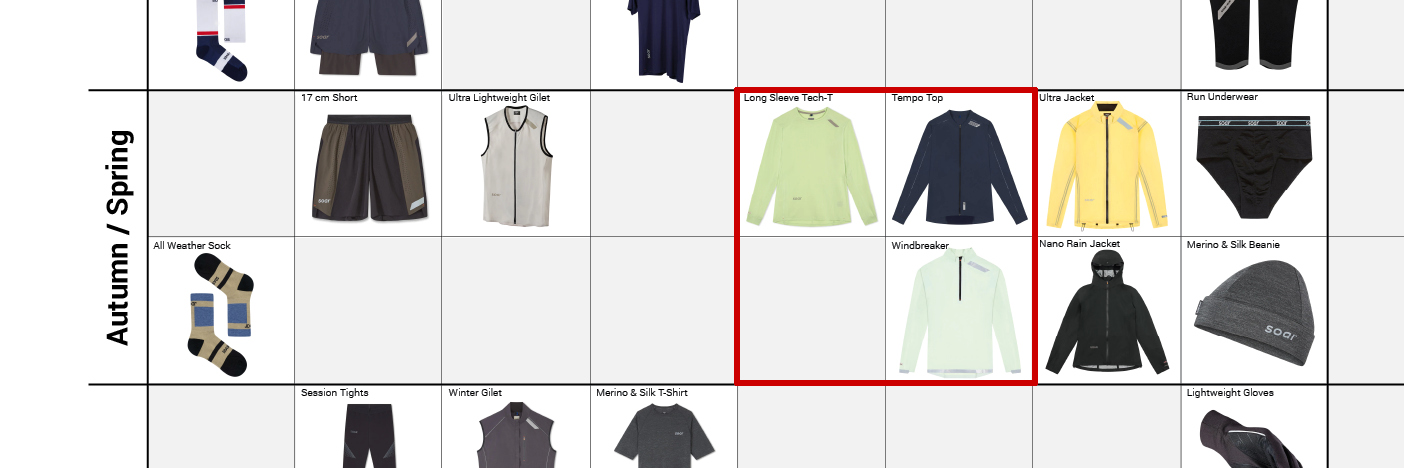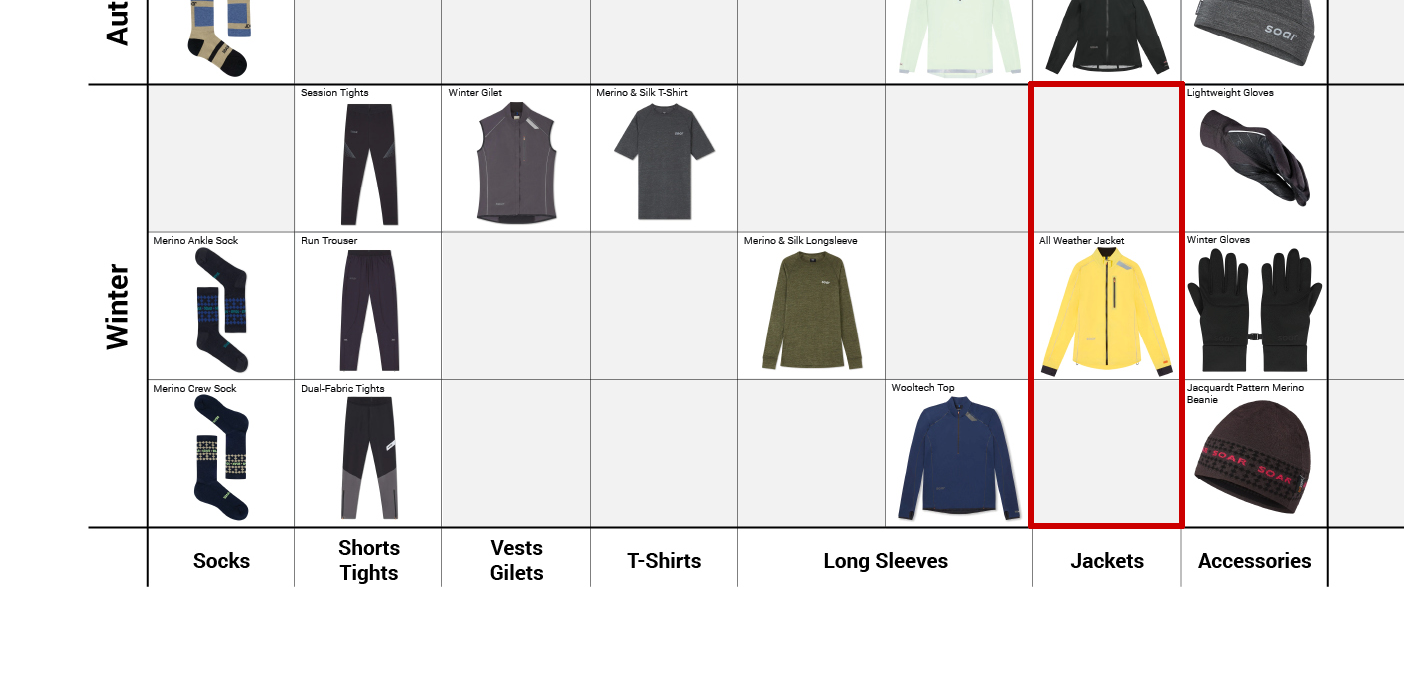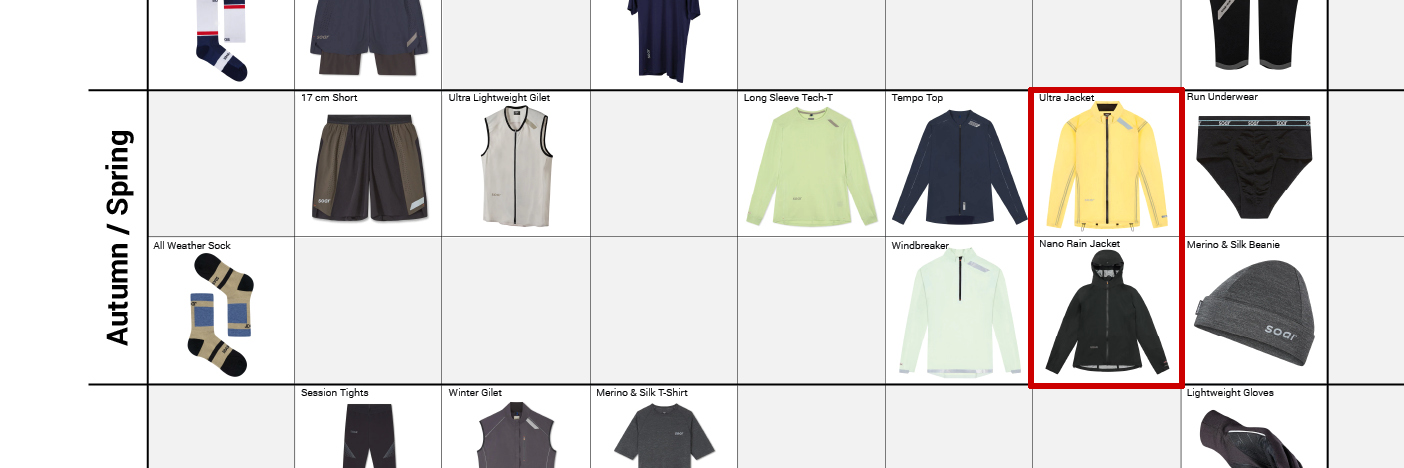Dieser Beitrag ist auch verfügbar auf: Deutsch
The collection of Soar Running desperately needs a good overview. Many of the products have very specific uses and it is not always easy to distinguish between them.
>> go directly to the Gear Guide
Transparency Note: Most of the products shown here were provided to me by the manufacturer for testing purposes. However, this article was written on my own initiative and without the involvement of Soar.
Inhalt / Content
Outing
I have been an enthusiastic fan of the English brand Soar Running for six years and have been able to test every collection extensively. I have several generations of T-shirts, shorts and jackets in my wardrobe. And I make good use of them: I’m often running exclusively in Soar gear.
So I dare to organise and structure the current collection a little in order to work out the ideal uses for the individual garments. Accordingly, this is my classification and not necessarily that of the manufacturer!
Systematics
Strictly speaking, Soar has 2.5 product lines: RUN for training and competition (left part of the graphic), ELITE for competitions of very ambitious amateurs and professionals and the UTR line for trail running. However, there is only one real UTR product so far, so I have counted them as ELITE for my overview (right).
For further classification, I find the seasons or the weather most helpful. So in the bottom three rows are all the current Soar products, which I would reach for especially in cold weather.
At the bottom are the warmest clothes, further up those for milder temperatures. The two rows in the middle belong to autumn and partly also to spring with rain, wind and generally inconsistent weather.
In the summer, in warm temperatures or for competitions, the clothes from the top four rows are used. At the very top are all the products that I would only take out of my wardrobe for the most sweaty runs.
The vertical categories should be self-explanatory – but not the difference between the individual products. So I’m going through them category by category, from winter to summer. I’m leaving out the accessories, because I can’t say anything about them from my own experience.
Soar Gear Guide
Socks
All warm socks at Soar are made of merino. The only difference between the two models offered is the length: there is a slightly shorter version “Merino Ankle Sock” or the longer “Merino Crew Sock“. In my opinion, this does not make a significant difference because the length is not very different.
I definitely still wear the “All Weather Socks” in winter. However, their special feature is how they deal with moisture: the material is slightly water-repellent. This doesn’t make them waterproof, but after a dip in a puddle they are “dry” again quite quickly and you don’t get cold feet – no matter what time of year it is.
The two lengths “Crew” and “Ankle” are also found in the summer socks. There is another version of the longer Crew Sock made of a particularly airy material: the Super Crew Sock. I haven’t tried them yet, because the normal version of the socks is actually airy enough for me.
Shorts and Tights
I have to admit: I don’t find the dual-fabric tights to be super-warm. This shows that Soar offers “performance wear”. If need be, they could also be combined with the Run Trouser to get a second layer. The Session Tight, on the other hand, is already so thin that you probably could wear shorts instead.
For autumn or spring there is only the 17cm Short to choose from, which has arguably replaced the Three Season Short. It consists of an inner brief and a long outer short made of slightly firmer material. This protects the legs better than the summer models. Depending on personal preference, however, you can also run with the 17cm Short in winter and certainly well into the European summer.
The Dual Run Short, on the other hand, also consists of an inner tight plus a short, but is made of a much thinner material than the 17cm Short. The usage certainly has a large overlap in milder temperatures. However, I see the advantage of the Dual Run Short more in the summer or during sweaty sessions, where the inner tights certainly prevent you from getting sore.
Of course, the half tights could also do the job if you like running in these. For a particularly thin version, you have to go to the ELITE Speed Shorts. With these, you won’t be dressed too thickly, even in hot races.
A similar choice can be made with the shorts: the Run Shorts in the current version are really super-thin and a good choice even in a hot summer. If you want to save even more fabric, you can alternatively go for the ELITE Race Shorts.
Basically identical in construction, but with well thought-out pockets and loops for marathon nutrition, the ELITE Marathon Shorts are also a good choice. But really only if storing gels and the like really presents its own challenges.
Vests and Gilets
There is also a wide range of sleeveless styles. On cold days I find the new Winter Gilet very comfortable. It is made of the same material as the All Weather Jacket. This means: very good protection against wind and rain with excellent breathability because no membrane is needed. The gilet can be worn as an outer layer over warm tops in icy temperatures. But it can also serve well over a thin longsleeve on windy autumn days.
It is similar with the Ultra Lightweight Gilet: it has the same fabric as the Ultra Jacket and is therefore also well protected against wind and rain – but it is quite thin. I wear it on rather mild autumn days when small showers are to be expected or the wind is too fresh for me. But it can also be a welcome second layer on summer evenings.
For really hot summer days, the RUN collection has a singlet. It is made of the same thin fabric as the Tech-Ts, but without sleeves. The ELITE Race Vest is made from even less material – and also thinner.
T-Shirts
For winter, Soar has a T-shirt made of merino wool and silk as a baselayer. You could wear it on its own, but it’s not meant for that.
There are three models for the summer. The Tech-T is a very universal T-shirt made of a very thin and soft material. I still like to wear it even on very hot days because it doesn’t stick to the skin even when sweaty.
The Half-Zip T gives you the option of letting additional air and thus cooling to the skin through the zip. The material is also a little airier at the sides. The Hot Weather T is really thin. It is made of the same extremely airy material as the ELITE Race Vest. While I could do without the Half-Zip T, the Hot Weather T is an absolute must.
The UTR Top is a very special T-shirt, because it was designed for use under a running vest (typically for trail running). Therefore, the parts that are subject to wear and tear are made of an abrasion-resistant material.
Long Sleeves
The merino baselayer is also available as a long-sleeved version – certainly the better choice for me in winter. The Wooltech Top is also quite warm without a baselayer and can be worn on its own at temperatures above 0°C. Or you can combine it with the merino longsleeve, the Winter Gilet or one of the jackets and be prepared for any weather.
For the transitional period, when a T-shirt is just too cold, the Tech-T is also available as a longsleeve, which is very versatile and a must-have in any wardrobe. The Tempo Top, on the other hand, fits a little tighter and is more suitable for demanding training sessions. The long zip allows you to regulate the temperature. The top can be worn next to the skin or with a thin baselayer.
The Windbreaker can also be worn like a longsleeve and protects against wind and light rain. The material is slightly thicker and roughened on the inside. Basically, it would also pass for a jacket.
Jackets
Now we get to the real highlights! When it comes to jackets, Soar is second to none. The All Weather Jacket is the best example of this. It is not only the warmest jacket in the range, but thanks to its special material it is also wind and waterproof without the need for a membrane. It can be combined well with thin and thick layers underneath, or worn solo in autumn or spring.
If protection from rain is the main concern, the Nano Rain Jacket is the best choice. Soar has developed a membrane that is extremely breathable. So even on sweaty runs in the rain, there’s no plastic bag effect.
The Ultra Jacket, on the other hand, is based on the principle of the All Weather Jacket, but is much, much thinner. It keeps out rain showers just as well as wind. I often wear it in spring, when the weather is no longer really cold but unstable.
Conclusion
In the Soar collection you will find apparel with a very wide range of uses (17cm Short, Tech-T, Windbreaker, …), but also some for very specific purposes (UTR Top, ELITE Marathon Shorts, Ultra Lightweight Gilet, …).
I hope that the Gear Guide has helped to explain where functions are similar or overlap, which of the variants you should choose and when. Basically, the more specialised the function, the less likely it is to find something even halfway comparable from another manufacturer. ;)
